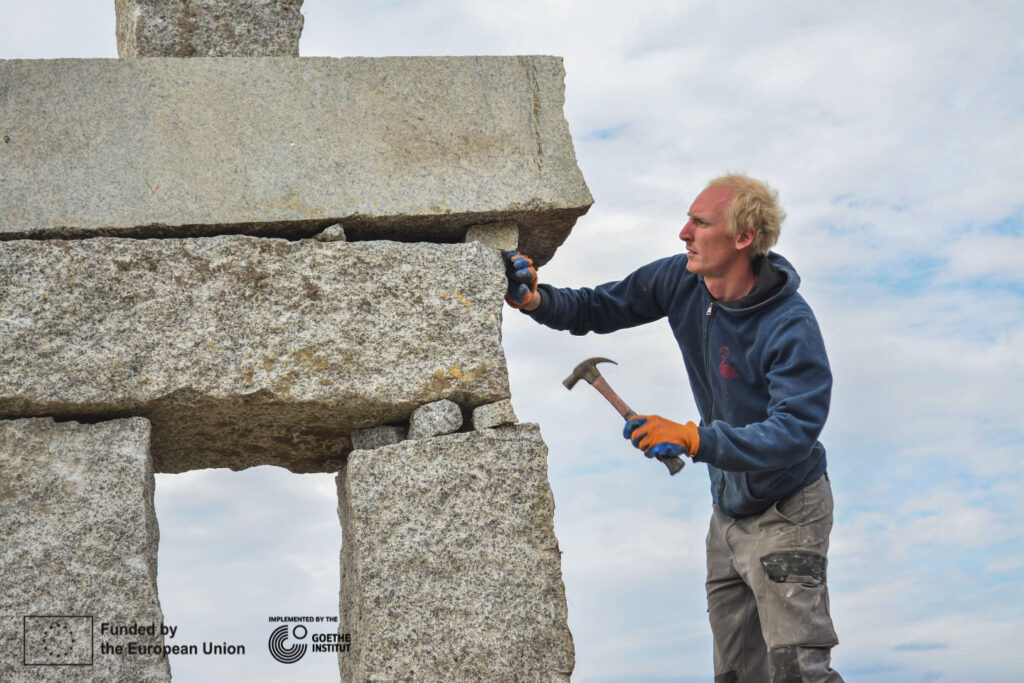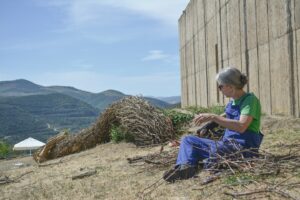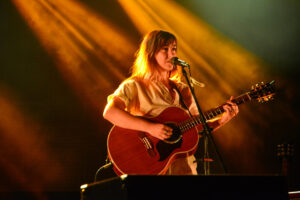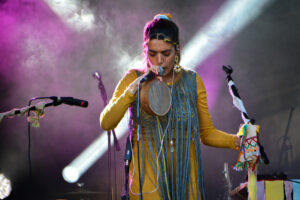Organised and managed by the Rewilding Portugal team, the “CÔA – Corridor of Arts” Festival united art, nature and culture in the Greater Côa Valley this July. Attracting thousands of visitors, the event helped the team establish and deepen connections with a wide range of stakeholders and promote the benefits of rewilding to a huge audience.
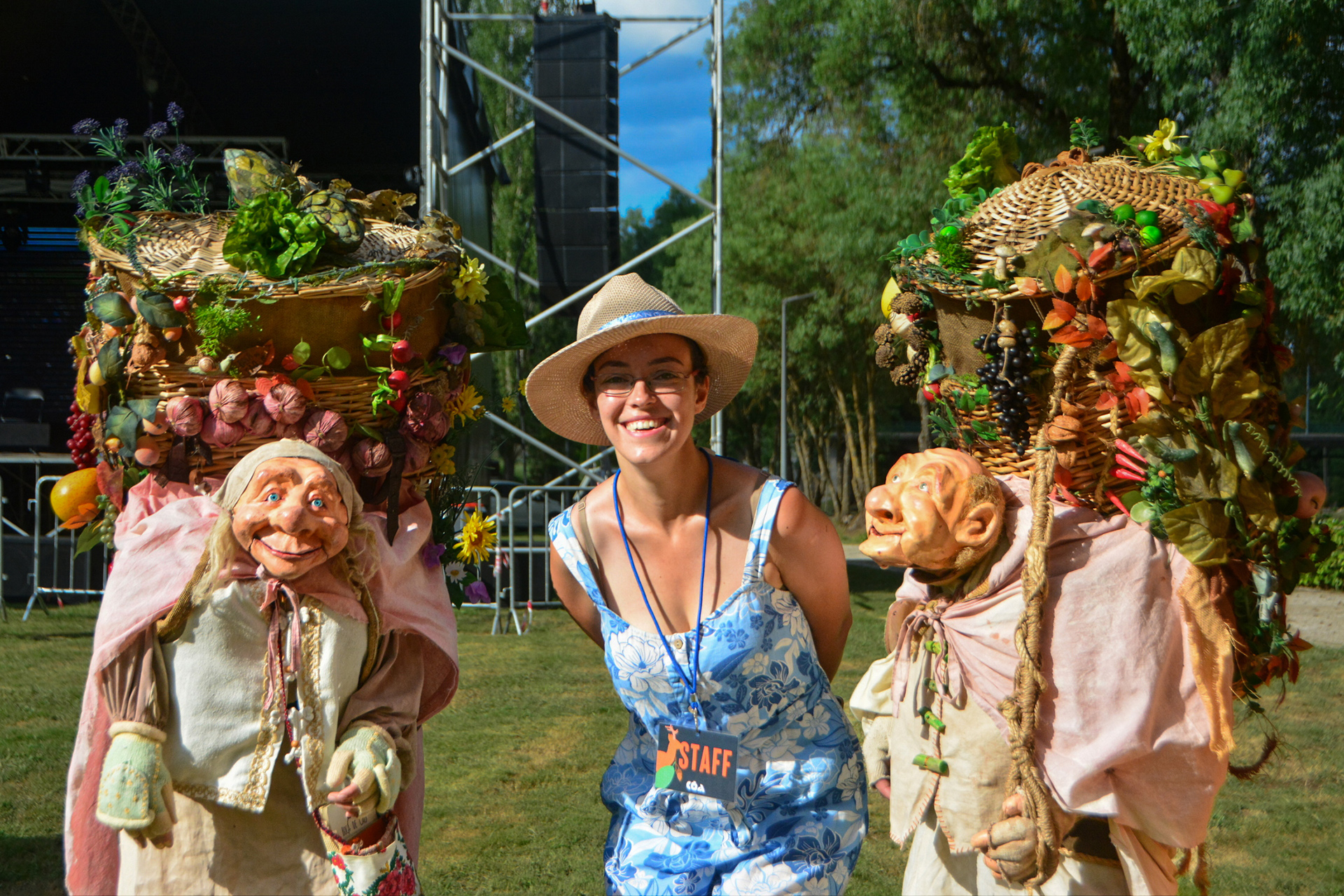
A uniquely engaging event
Having taken place across the entire month of July, the “CÔA – Corridor of Arts” Festival has just come to a close in the Greater Côa Valley rewilding landscape in northern Portugal. Celebrating the captivating nature and culture of the valley, the event proved a resounding success, building engagement with local communities and helping to promote rewilding.
“I’m incredibly pleased with how the festival went,” says Rewilding Portugal team leader Pedro Prata. “It saw contemporary artistic expression in the Côa reborn – the results of the artistic residencies have become landmarks that will inspire visitors for many years to come. But more than this, the event drew people from far and wide and from many different backgrounds to the valley, raised awareness of rewilding and its benefits, enhanced a sense of pride in local communities, and helped us to establish and develop a wide range of partnerships. Overall I think it gave the Portuguese rewilding movement real added momentum.”
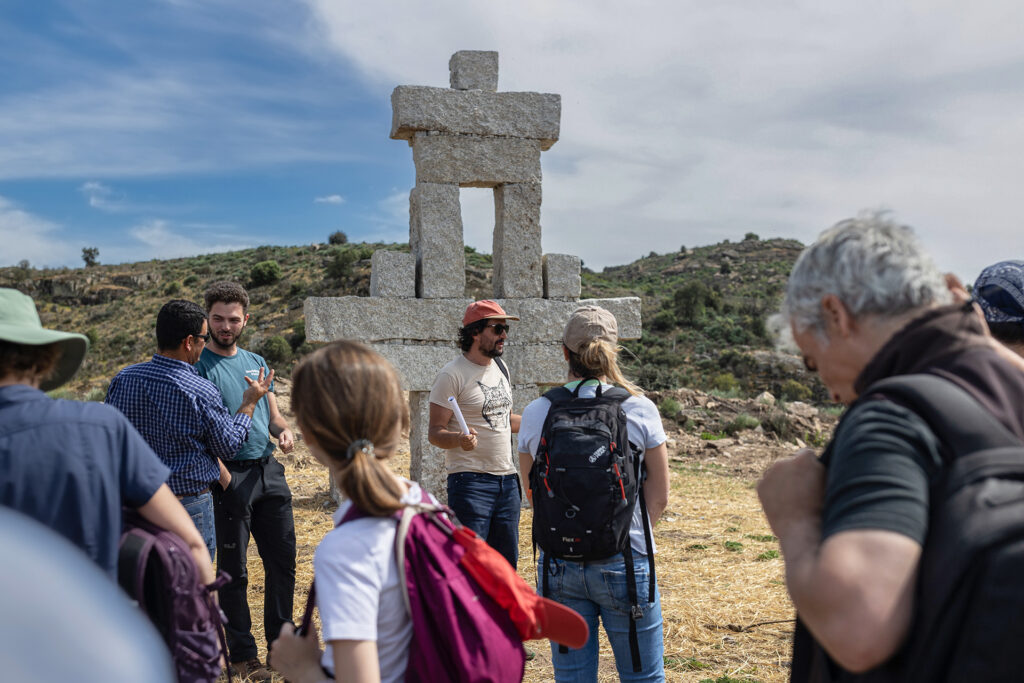
Building connections
The CÔA Festival, which kicked off in the city of Sabugal on July 1 and ended on July 30 in the city of Vila Nova de Foz Côa, attracted around 7000 visitors. It took place across five different weekends in five different municipalities – all in and around the Greater Côa Valley rewilding landscape. On weekends the festival featured cinema, theatre, music, and other performing arts, as well as markets where local producers and operators were able to promote and sell their natural products and nature-based services. There were also educational activities for children.
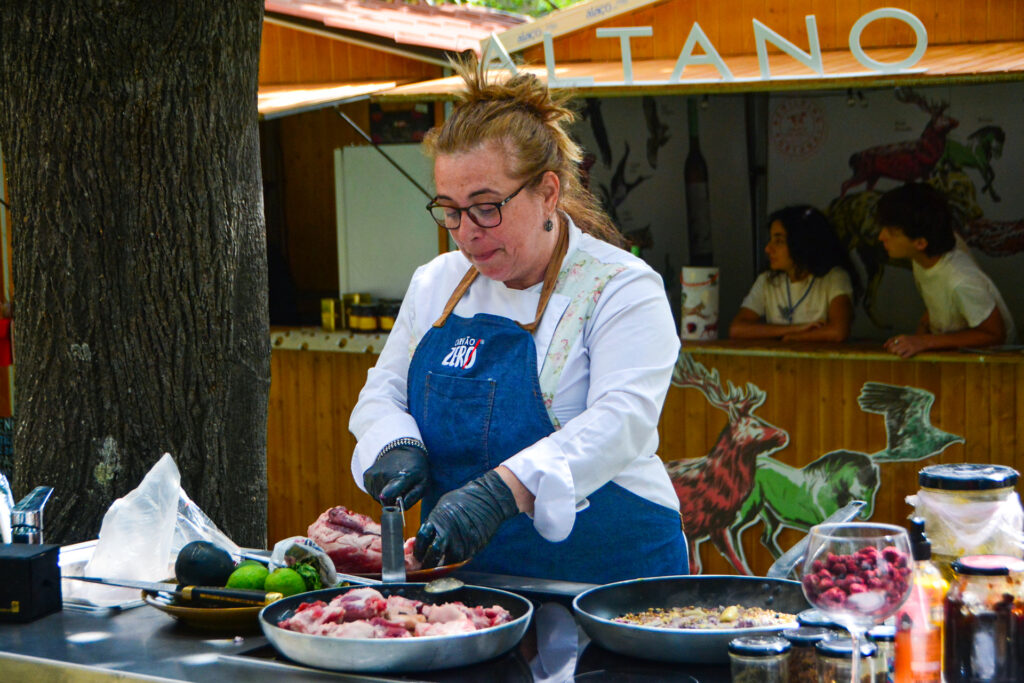
On the days between these weekends, community-focused workshops and activities in nature were organised, as well as field visits and walks to pieces of art developed by artists in residence. All in all, 30 activities in the field took place, attracting 500 participants.
“It was great to see people joining in activities and even becoming an integral part of some performances,” says Fernando Teixeira, Rewilding Portugal’s communications and marketing officer and festival director. “We managed to reach out to children, young people, adults, seniors, people with some kind of disability, and even those living in isolated rural areas. The festival made people in local communities proud of where they live. This was seen in the incredible welcome that all the artists received when they came here. They felt embraced by a Greater Côa Valley that is vibrant and increasingly hand-in-hand with nature.”
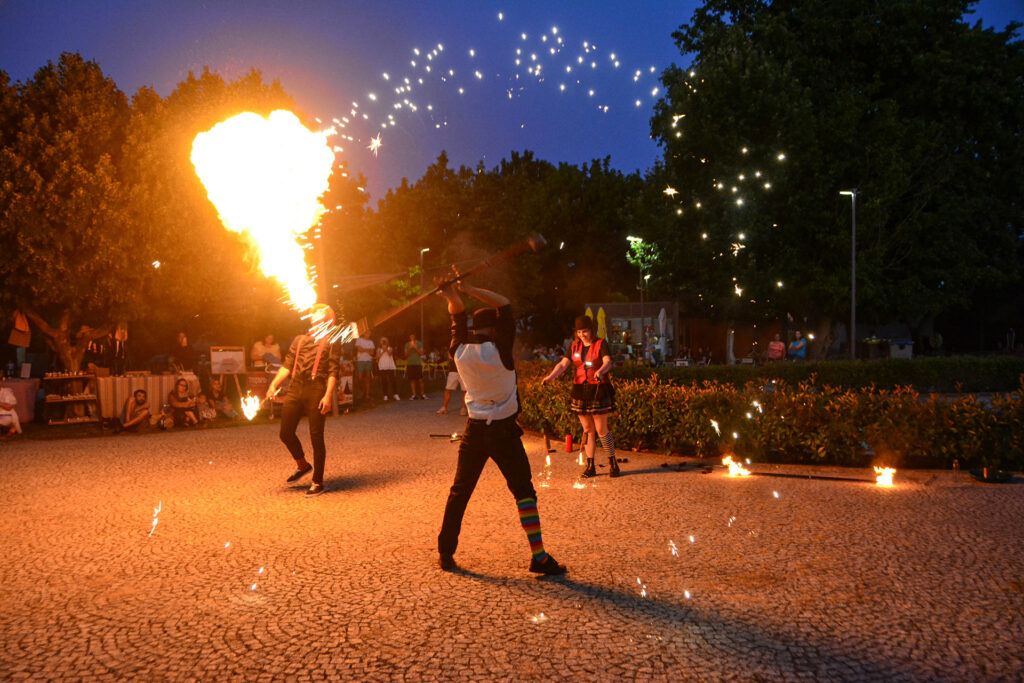
The art of rewilding
The dramatic landscapes of the Greater Côa Valley – which stretches for around 140 kilometres from south to north – is home to such iconic species as the griffon vulture and Iberian wolf, with long-term population support provided by the Rewilding Portugal team. Yet the Côa River is as much about man as it is about wildlife. Rocks beside the river are decorated with engravings dating back thousands of years, highlighting the importance of this waterway and its wild nature to people and livelihoods of old.
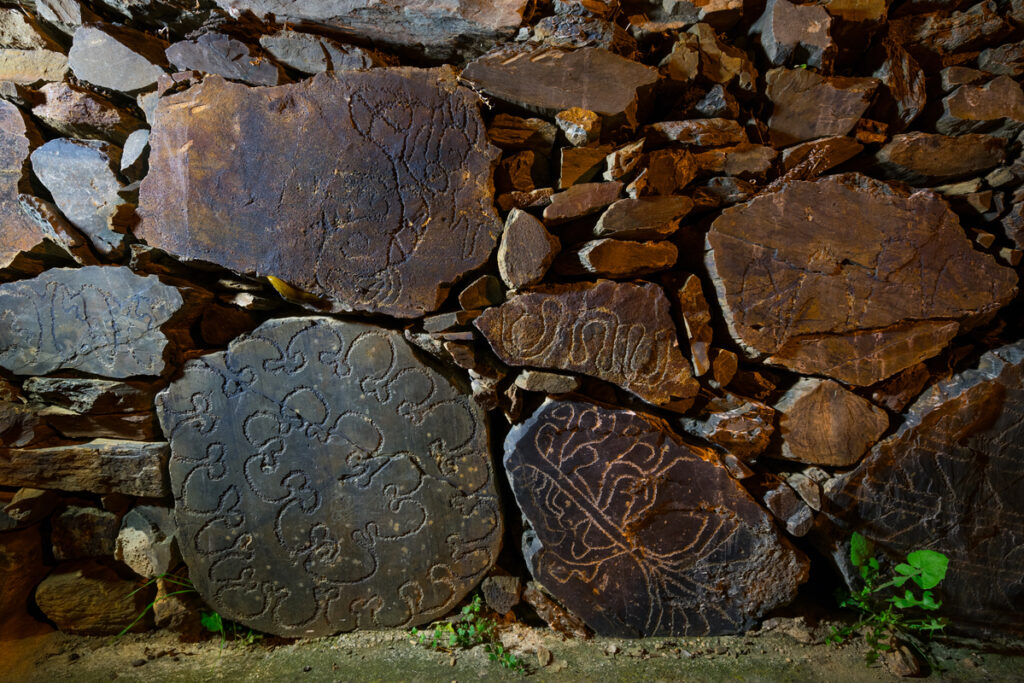
In more recent times, the silent waters of the Côa have witnessed many decades of rural depopulation and associated land abandonment, which have negatively impacted both the ecology and cultural heritage of the area. Through rewilding, and by organising events at the intersection between nature and culture, the Rewilding Portugal team are working hard to counter both of these trends. More than 400 artists were involved with the festival, including seven artists in residence, who connected with communities in the valley to co-create works of art, using natural materials, respecting natural decay, and referencing the valley’s time-honoured artistic history.
“Public art and rewilding both rely on public dialogue for their development and success,” says French visual artist Gaspard Combes, one of the festival’s artists in residence. “I loved spending time in Vale de Madeira (part of the rewilding landscape where Rewilding Portugal’s rewilding centre is located), talking to local people and answering their questions.
“The landscape, the granite and the valley’s prehistoric engravings were all a very strong and motivating environment for my sculpture. Hopefully, visitors will sense these aspects when they come here and will be triggered to learn more about this very special and beautiful area and how rewilding is enhancing it.”
Business boost
Attracting a large influx of visitors, the CÔA Festival proved good for businesses in the area too. Over the last few years, the Rewilding Portugal team have worked hard to establish the Wild Côa Network – an association of more than 40 like-minded local enterprises (from guesthouses to handmade natural product sellers) who share a vision for a wilder and more sustainable future. Around 20 network members offered their services through the festival.
Suzete Marques is a singer that performed at the festival. She also owns Casa da Praça, (LINK!) a guesthouse located in the city of Pinhel, which is part of the Wild Côa Network.
“My work is linked to the preservation and promotion of traditional Portuguese music, so being able to perform at the festival and make the connection with rewilding was perfect,” says Marques. “It’s so inspiring to see the interconnected work that the Rewilding Portugal team are doing to enhance the nature, culture and economies of the Greater Côa Valley. By working together I believe we can leave a fantastic legacy here for future generations.”
“Through the festival Rewilding Portugal demonstrated the capacity of recovering nature to give something back to local communities and businesses,” adds Fernando Teixeira. “It was really heartwarming to receive praise for our ability to attract external investment and raise the profile of the region – whether that be through overnight stays in hotels, meals in restaurants, footfall in local shops, or visits to historical monuments.”
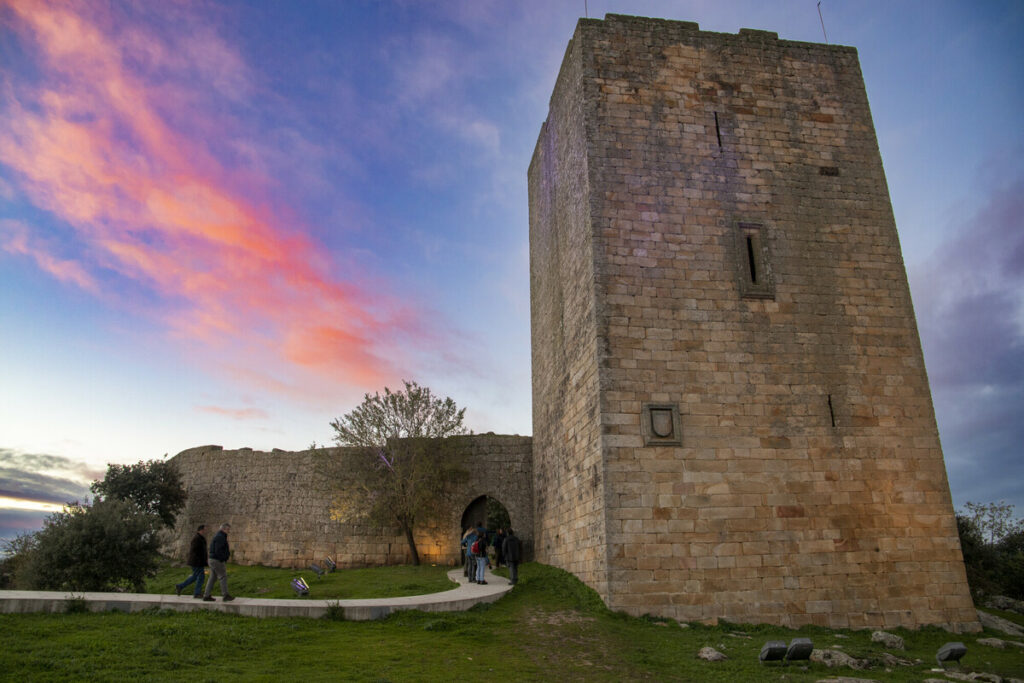
Critical funding
The CÔA Festival was funded by Rewilding Europe and the Endangered Landscapes Programme (ELP). The latter is managed by the Cambridge Conservation Initiative and funded by Arcadia, a charitable fund run by Peter Baldwin and Lisbet Rausing.
